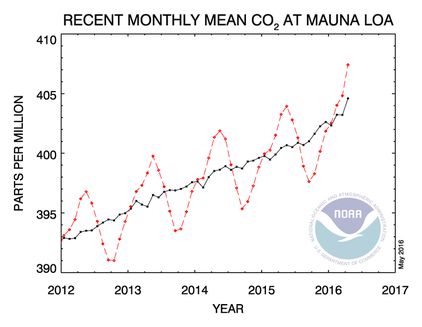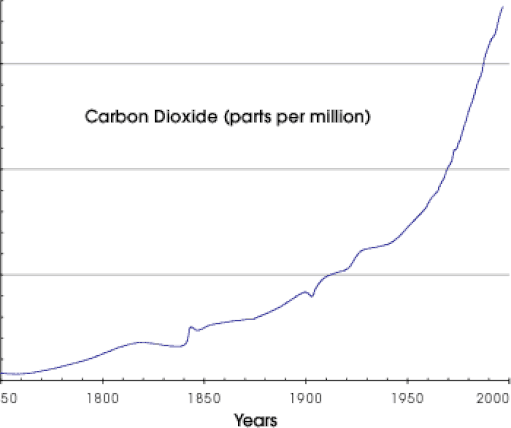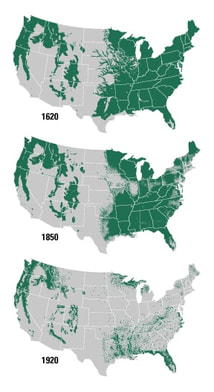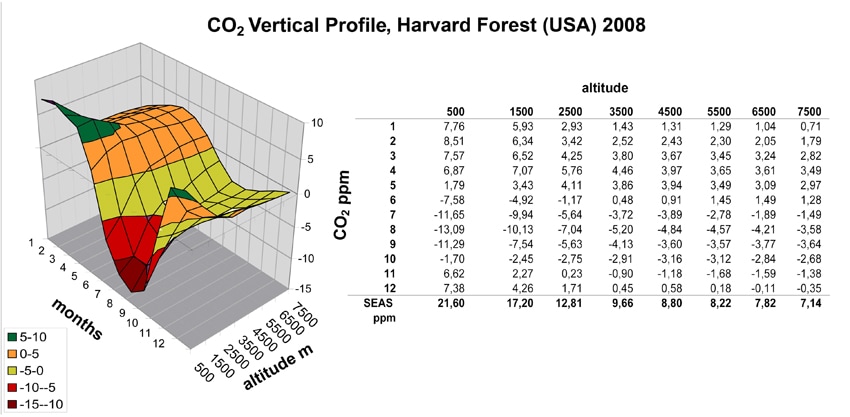
Photosynthesis is the process responsible for removing CO2 from the atmosphere and has a yearly cycle that is observed in the data from the Mauna Loa Observatories. The periods of declining CO2 levels are the periods of time when growth from vegetation increases due to the much greater land mass in the Northern Hemisphere. Excluding Antarctica that has virtually no vegetation growth, the Northern Hemisphere has a 1:1.5 land to water ratio compared to the Southern Hemisphere that has a 1:4 ratio. This increased amount land allows for much greater growth and sequestering of CO2 during the year and is a vital part of our planets cycle. This decline in CO2 is attributed to the Siberian Bloom along with other northern regions such as Northern Canada and Alaska.

Conversion of land from its natural state is one of the driving forces of rising CO2 concentration levels. This is evident by the CO2 levels rising prior to the industrial age,
Although many locations have increased their vegetative growth over the years, the growth doesn't compare to the continual daily devastation. We need to better understand our world in 1800, and then compare it to today. In the book by Henry Adams, "The United States in 1800" gives us great insight into the early days of America. Another good source of research is the "Lewis and Clark Journals" available online. |
Prior to 1800, the western US was located on the other side of the Appalachians, and there were no roads connecting them. Early settlers reported that the forests were so thick that a squirrel could jump from tree to tree from the east coast to the Mississippi and never touch the ground.
Logging in North America went unrestricted until the 1930's so our concept of growth today is very distorted, Any agreement concerning our planets welfare must include an aggressive replanting program and the prevention of clearing any further land from it's natural state. |
In this graph we can see the CO2 concentrations levels throughout the year in a forest at various elevations. During the winter, due to the loss of photosynthesis in the Northern Hemisphere, the CO2 levels begin to rise. Since the source is primarily from ground level and the molecular weight is heavier than both Oxygen and Nitrogen, the concentration levels will naturally accumulate at greater levels at ground level. As the spring bloom occurs in the north, the CO2 levels rise as higher temperatures increase microbial decay and aid in maintaining warmth and fueling the vegetation for the spring bloom. This in turn causes a rapidly decline at surface levels and then slowly decline at higher elevations until the fall when the photosynthesis once again shuts down.

